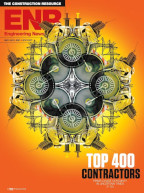
WOLF
An interesting twist to the limitations question exists if the particular construction project had utilized the AIA General Conditions (AIA Document A201) in existence before the 2007 edition. That’s because language in those general conditions spell out different times when statutes of limitations start to run.
For example, Article 13.7 of the 1987 and 1997 editions of the AIA General Conditions provides that statutes of limitations begin to run (accrue) at either substantial completion or breach by the contractor (installation of defective work), depending on the circumstances.
A disconnect between the Colorado statute of limitations starts to run when a defect is discovered or should have been discovered, in the exercise of reasonable care, and the AIA General Conditions provision that the statute of limitations starts to run from the time of either substantial completion or breach by the contractor. In short, Colorado follows the “discovery” rule, while the pre-2007 AIA General Conditions follow the “time of breach” rule for when the SOL start to run.
That’s a huge difference. For example, if the structural defect caused by faulty foundation work is not discovered or discoverable until walls begin to exhibit cracking more than two years after the building is completed, the owner’s claim against the contractor may be barred if the AIA provision is applied.
So much for the good news for contractors. The more favorable statute of limitations may apply only if two conditions occur:
- The AIA provision appears only in AIA General Conditions in editions before the 2007 edition. The later edition does not have the same provisions—it defaults to state law, and
- A Colorado court or an arbitrator would enforce the AIA provision. A 2006 Colorado Court of Appeals decision ruled that parties may, by contract, shorten limitations periods. Applying that rule here would appear to allow the AIA provision to apply and therefore shorten the statute of limitations time.
So, if you are a contractor against whom a construction defect claim has been made, and if your contract included the AIA General Conditions in the 2007 edition or before, you may have a statute of limitations defense if suit or arbitration proceedings are initiated more than two years after you allegedly breached your contract.
To prevent parties from pursuing claims in court or arbitration that are stale because of the passage of time when witnesses and exhibits may be unavailable, various statutes of limitations (SOL) exist that limit times for starting legal proceedings.�The Colorado statute applicable to construction defect claims against construction industry participants (contractors, subcontractors, architects, engineers, etc.) requires that suits be started within two years after construction defects have been or should have been�in the exercise of reasonable diligence (care)�discovered.�There are limited exceptions.�On top of that, a Colorado statute of repose bars all such claims if not started within six years.�However, if the defect is first discovered or discoverable within the fifth or sixth year, they are barred if not brought within two years from discovery.

Post a comment to this article
Report Abusive Comment